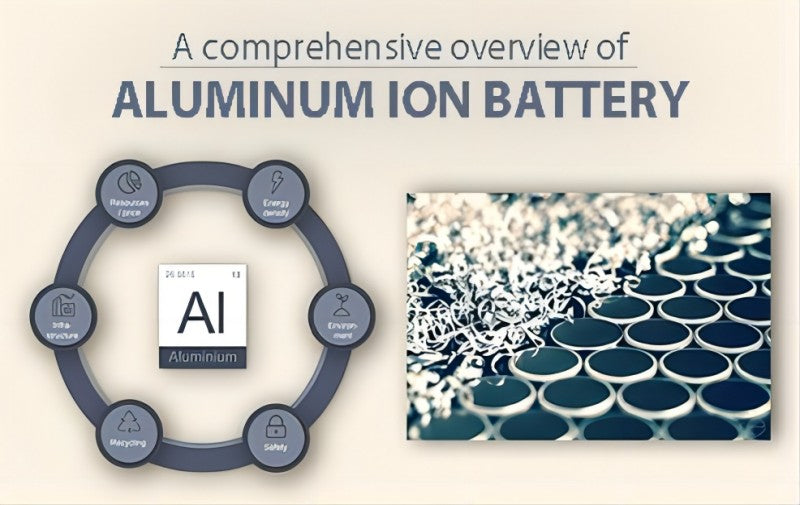
Main content:
Saturnose, a battery research and development company, has released an Enhanced Altered Aluminum Ion (Ea2I) battery with an energy density of more than 600Wh/kg. It only needs to be charged for 12 minutes to provide a cruising range of more than 1,200 kilometers and can be used more than 20,000 times.
The charge-discharge cycle, which is at least 15 years of stable service life. The company claims it will realize mass production of the battery in 2022, making it the world's first commercial aluminum-ion solid-state battery. Aluminum ion battery is becoming more and more promising in battery industry.
Development of aluminum ion battery
Lithium-ion batteries with lithium cobalt oxide as the positive electrode and graphite as the negative electrode have always been the "pillar" in the field of energy storage because of their light weight, high energy density, and long service life. In the background, the vigorous development of the new energy industry has put forward higher requirements for energy storage devices.
Lithium-ion batteries are starting to feel a bit powerless due to limited reserves and high prices. The content of aluminum metal in the earth's crust ranks first among metals, and the annual mining amount is more than 1,000 times that of lithium metal, and the price is very cheap. In addition, aluminum metal has a high charge storage capacity, and each aluminum atom can be charged and discharged.
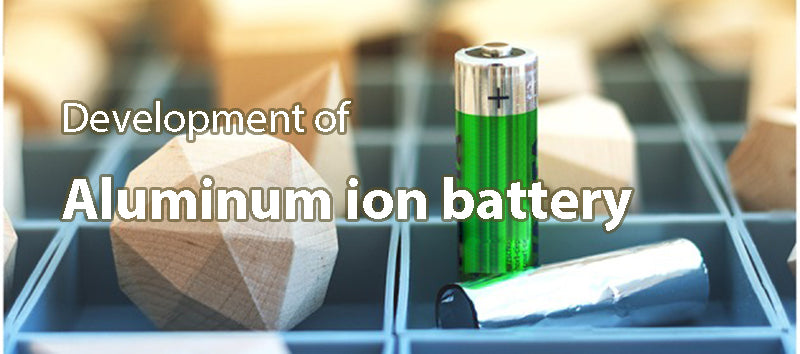
Release up to 3 electrons and have a very high energy density. Lithium, by contrast, can only release one electron. Therefore, aluminum ion battery with aluminum as the negative electrode are expected to become the best choice for alternative battery systems.
Advantages and problems of aluminum ion battery
First of all, the battery uses three-dimensional graphene as the positive electrode material of the battery. Graphene has extremely good electrical conductivity and a huge specific surface area, which can greatly shorten the charging time of the battery and improve cycle stability. Secondly, good safety is also a major advantage of aluminum ion battery.
The ([EMIm]Al x Cl y ) ionic electrolyte used in the battery has low flammability and no safety issues such as flammability and explosion. The team members also conducted a safety test on the battery. During the charging and discharging process of the battery, even if the battery is penetrated with an electric drill, it will not burn, and it will work normally for a while.
Another outstanding feature of aluminum batteries is flexibility, which can be bent or folded arbitrarily, so it also has the potential to be applied to flexible electronic devices.
The future of aluminum ion battery is bright and worth looking forward to, but there are still some technical problems, mainly including:
- The working voltage is far below the working lithium-ion battery voltage;
- The storage capacity needs to be improved;
- The humidity sensitivity of the ionic electrolyte causes problems such as harsh synthesis conditions and increased storage difficulty, and the weakly acidic chemical properties easily lead to corrosion of the metal shell of the battery.
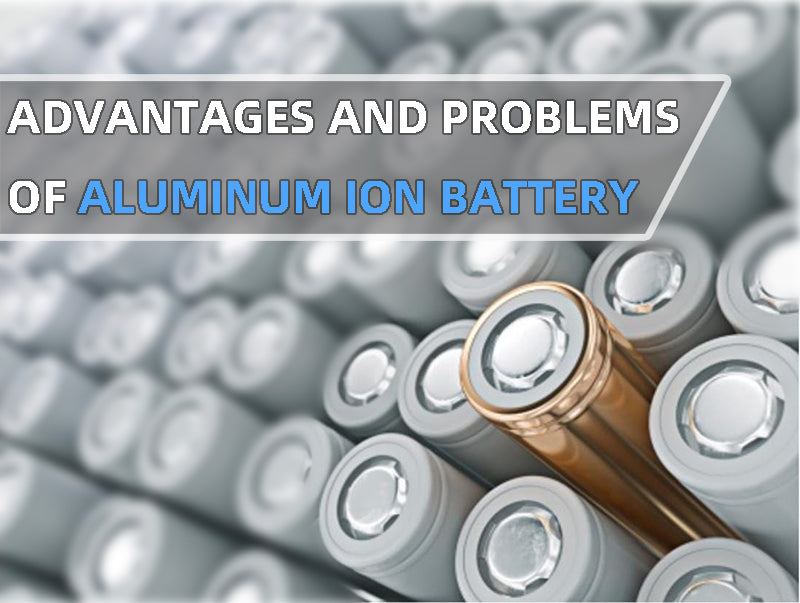
In addition, expensive ionic electrolytes inevitably increase the production cost of batteries. Therefore, most of the research on aluminum ion battery is dedicated to the development of new positive and negative electrode materials and alternative ionic electrolytes, and breakthroughs have been made.
Cathode materials in aluminum ion battery
Before talking about the positive electrode material, let's briefly introduce the working principle of the aluminum ion battery. Aluminum ion battery work similarly to lithium-ion batteries. Taking the graphite positive electrode as an example, during the discharge process, the Al metal at the negative end is oxidized to form Al3+, and under the action of the electric field force, the Al3+ and [AlaClb]- ion clusters in the electrolyte are embedded in the positive electrode material to form AlxCly compounds.
The AlxCly compound formed by these two ions after intercalation interacts with the graphite cathode through van der Waals force to maintain structural and chemical stability. During the charging process, AlxCly embedded in the graphite positive electrode comes out and forms Al3+ and [AlaClb]- ion clusters, and Al3+ returns to the surface of the negative electrode and is reduced to form Al simple substance.
Al3+ shuttling back and forth between the positive and negative electrodes, coupled with the cooperative intercalation and deintercalation of [AlaClb]- ion clusters, forms the charge and discharge process of the aluminum ion battery. The specific oxidation-reduction reactions involved are as follows:
Discharge process:
Al - 3e- → Al3+ (negative electrode)
Al3+ + [AlaClb]- + e- → AlxCly (positive electrode)
Charging process:
Al3+ + 3e- → Al (negative electrode)
AlxCly -e- → Al3+ + [AlaClb]- (positive electrode)
Different from lithium batteries, Al single substance releases up to 3 electrons at a time during the oxidation reaction, so it has a higher theoretical energy density. One small detail that needs to be mentioned is that the size of [AlaClb]- ion clusters is much larger than that of Al3+, so a cathode material with a layered structure is often required in the intercalation reaction of aluminum ion battery.
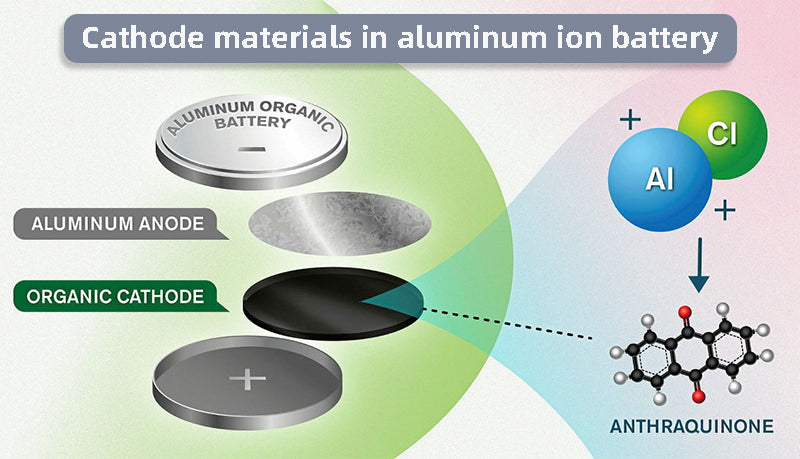
In general, the current anode materials for aluminum ion battery mainly include carbon-based materials, transition metal oxides, transition metal sulfur, selenide, etc. Speaking of carbon-based materials, there are some famous carbon-based composite materials companies in China. And they have much expericence in manufacturing carbon based composite materials.
For the improvement of specific capacity and rate performance, we mainly start from two directions: changing the structure of carbon-based materials and doping non-metallic elements. The method of changing the material structure includes increasing the specific surface area, increasing the interlayer spacing, and reducing the intercalation order.
The increase of the specific surface area can promote the non-faradaic reaction process, effectively increase the electric double layer capacitance, and increase the interlayer distance, which is conducive to the rapid entry and exit of [AlaClb]-ions, and improves the rate performance of the battery. Compared with carbon-based materials, there are fewer reports on transition metal compounds as positive electrode materials.
Although transition metal oxides have a higher initial specific capacity, they generally decay faster during the cycle because there is a strong bond between the oxide and Al3+. The mutual electrostatic interaction of aluminum ions leads to the slow kinetic reaction of aluminum ions, which also limits the rate performance and cycle stability of the battery to a certain extent.
How to view the enhanced aluminum-ion solid-state battery
Currently, the enhanced aluminum-ion solid-state battery released by Saturnose has the following advantages:
- High energy density
At present, lithium iron phosphate and ternary lithium batteries are the mainstream in the lithium battery market. Their high-nickel material + silicon-carbon negative electrode battery structure can achieve an energy density of about 300Wh/kg, which is close to the theoretical limit, even for solid-state battery higher energy density in theory.
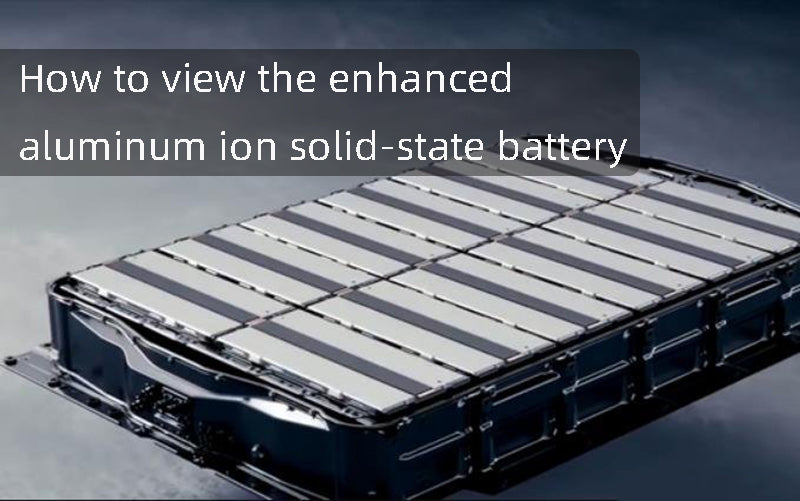
The semi-solid lithium battery product released by Welion in January 2021, has an energy density of only about 360Wh/kg, and the all-solid lithium battery technology has not yet broken through the technical barriers. Industry experts said that it will not be commercialized within 5 years. In contrast to aluminum ion battery, Saturnose claims that its enhanced aluminum-ion solid-state batteries have an energy density of 550-750 Wh/kg.
Calculated at the lower limit of energy density of 550Wh/kg, it is 1.83 times that of Guoxuan Hi-Tech’s high-nickel ternary lithium battery and 1.52 times that of NIO’s semi-solid battery. It surpasses the relatively mature ternary high-nickel batteries and solid-state batteries already in the market.
- High battery life
High energy density means high endurance. Saturnose claims that a 565kg, 150kWh aluminum ion battery pack can provide electric vehicles with a cruising range of more than 1,200km, and the charging time is only 12 minutes.
In contrast to lithium-ion batteries, mainstream lithium-ion batteries generally have a full battery life of 200-400 kilometers. When the battery is exhausted, the charging time is 8-10 hours. Even fast charging takes at least 2 hours. Judging from the data alone, this is undoubtedly a revolutionary progress.
- High and stable service life
While providing a cruising range of 1,200 kilometers, the aluminum ion battery can perform more than 20,000 charge-discharge cycles without significant degradation in electrochemical performance, that is, a stable service life of 15 years. The charge-discharge cycle of the lithium-ion battery is 5000 times, which is only 1/4 of the aluminum ion battery.
- High safety performance
This battery uses hybrid nanotechnology to develop fast charging electrodes and electrolytes, and uses aluminum, niobium, and solid electrolytes. The positive electrode material uses a high-energy, disordered rock salt structure, which avoids problems such as lithium dendrites and thermal runaway fires. Extremely high safety performance.
- High cost performance
Saturnose says aluminum ion battery cost 50% less per kilowatt than lithium batteries currently cost. Because the battery uses aluminum, niobium and other elements, nickel and cobalt are not used, and the aluminum element is abundant.
Summary
At present, the research on aluminum ion battery is still in its infancy, and there is still a lot of room for optimization of various components of the battery, such as the regulation of the oxide film on the surface of the aluminum negative electrode, and the research and development of new, non-toxic, low-corrosion and cheap electrolytes.
If these problems are fully resolved, coupled with the advantages of other technical indicators and cost, this kind of cheap, safe, high-speed charging, flexible and long-life aluminum ion battery will be widely used in daily life. In particular, it should be emphasized that due to the characteristics of aluminum ion battery, it is unlikely to compete directly with lithium-ion batteries in some applications that require high energy density.
On the contrary, their low cost, good cycle life, and safety make them useful in applications where cost, cycle life, and safety are particularly emphasized, such as large-scale smart grid energy storage.
Related article: top 10 battery aluminum plastic film brands, battery aluminum foil, top 10 lithium battery copper foil companies